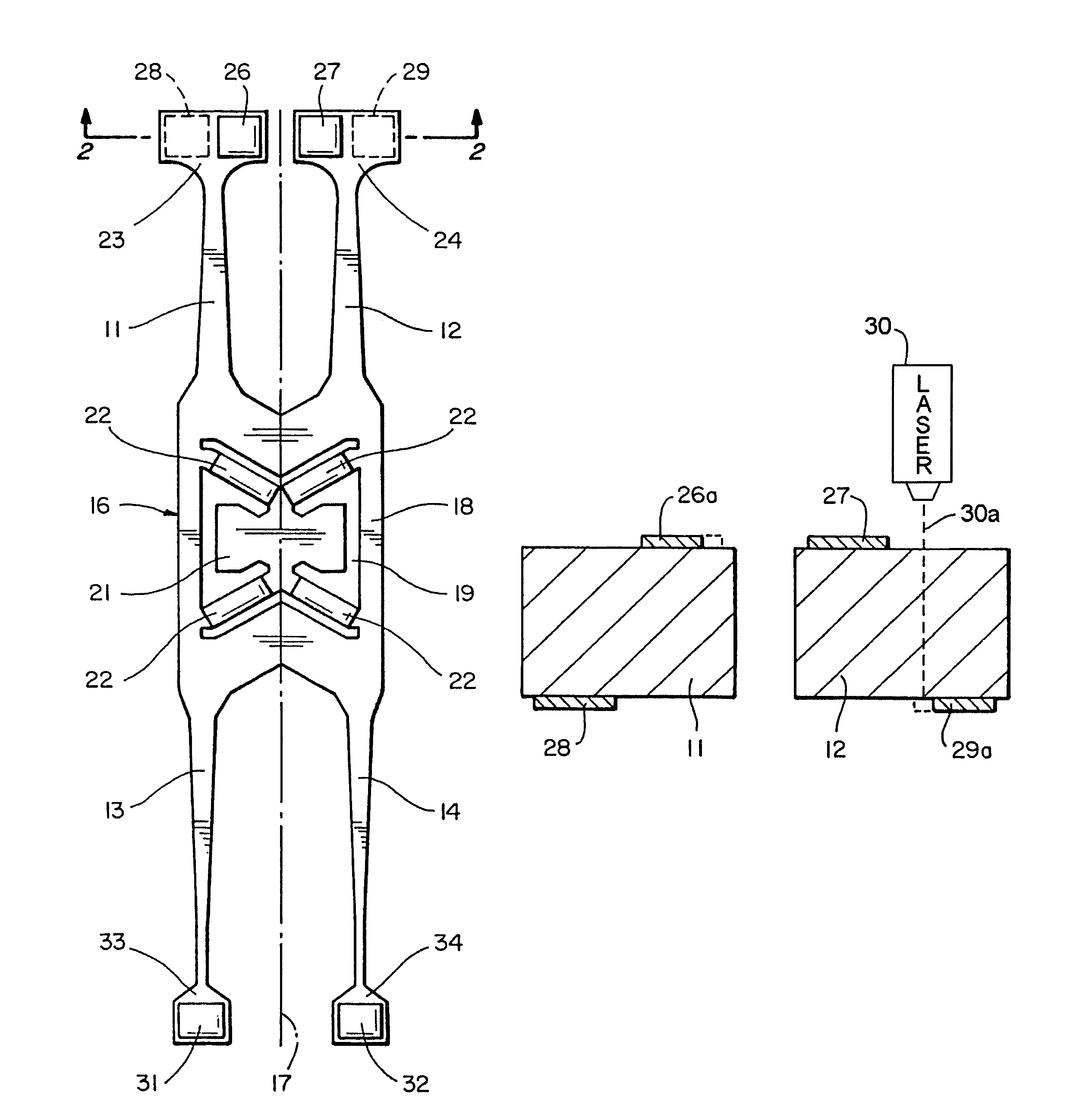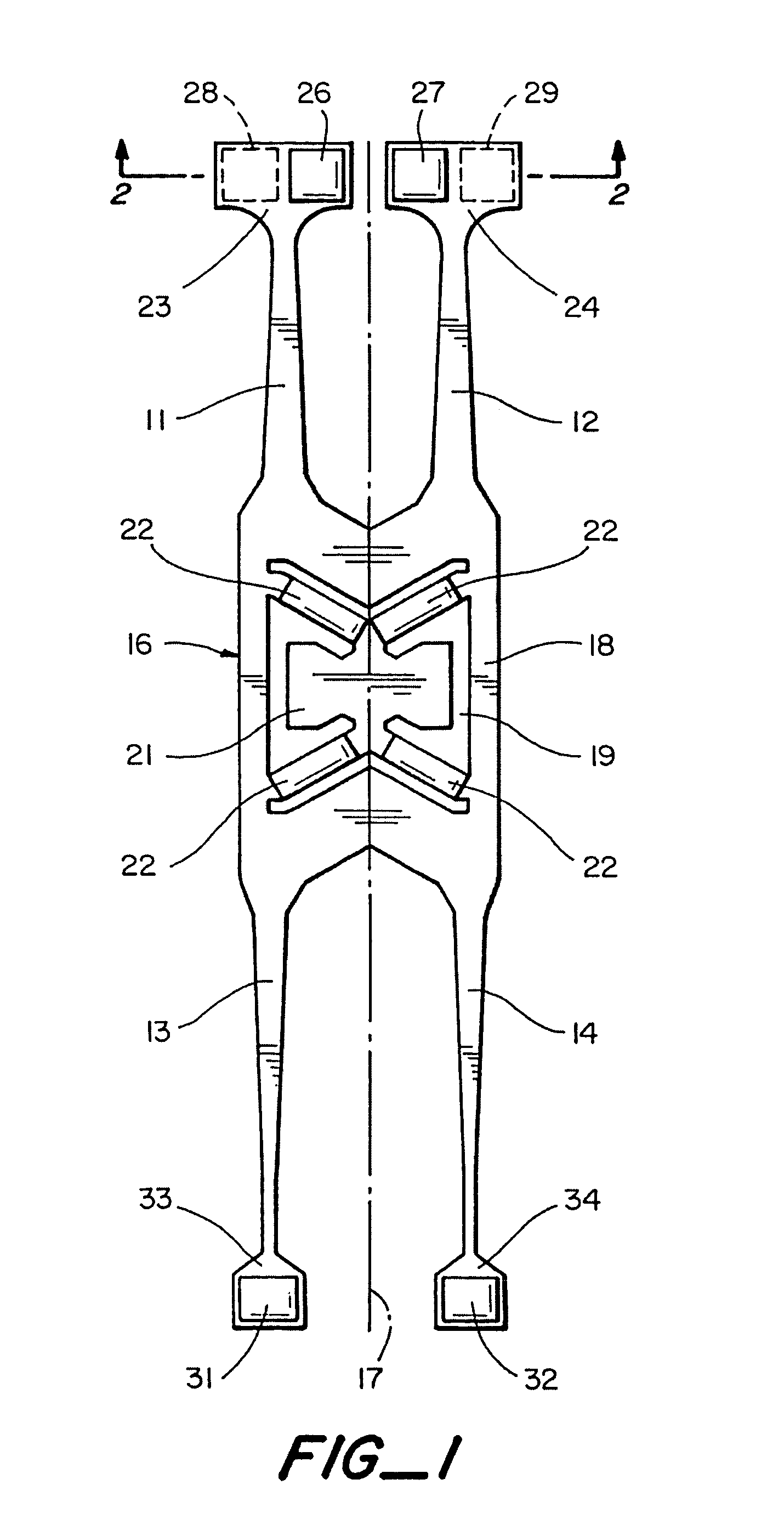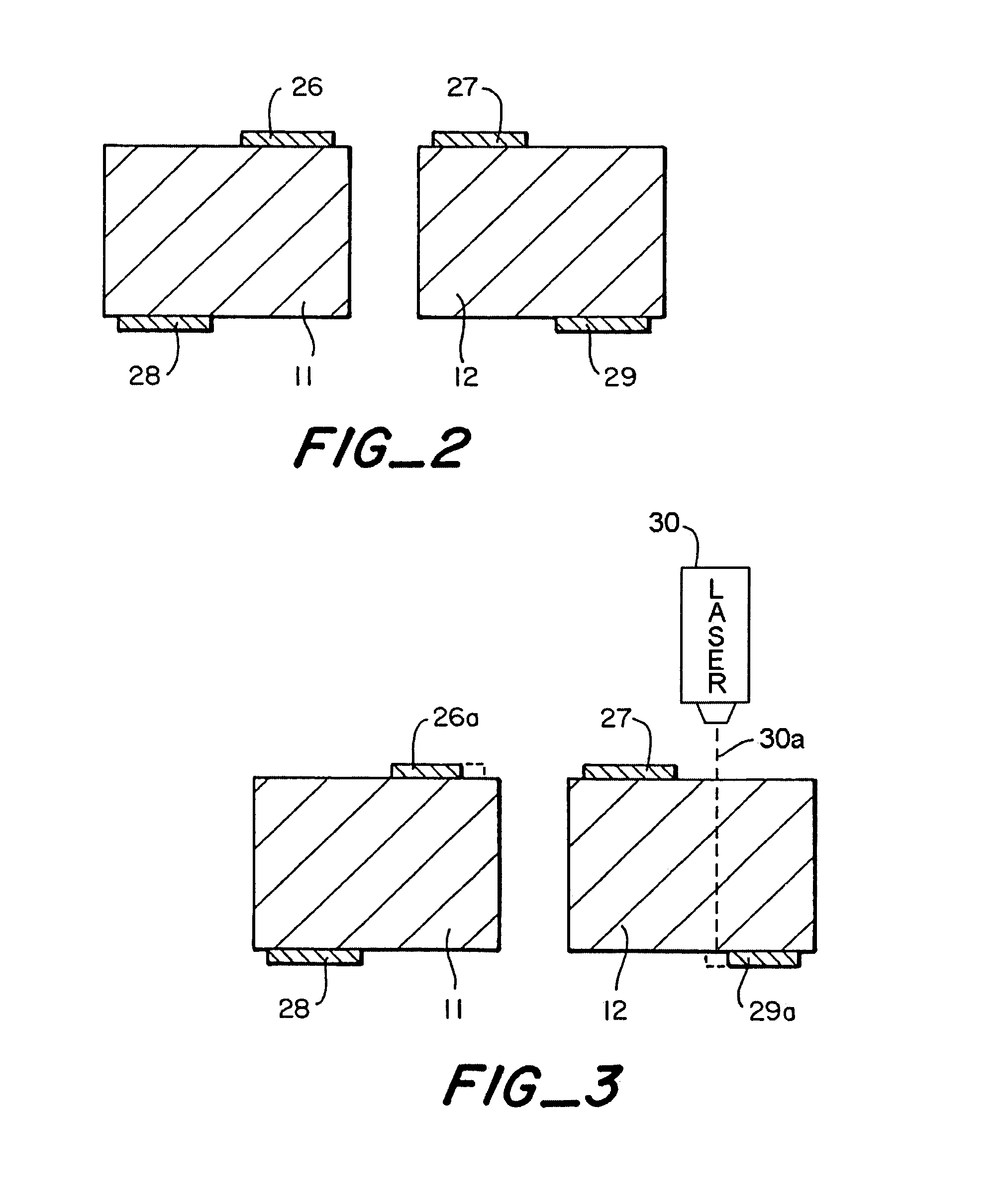Method of manufacturing a tuning fork with reduced quadrature errror and symmetrical mass balancing
a manufacturing method and quadrature error reduction technology, applied in the field of tuning forks, can solve the problems of large quadrature error signals, large relative error in output, and inability to manufacture errors, so as to reduce quadrature error, maintain mass balance, reduce quadrature error
- Summary
- Abstract
- Description
- Claims
- Application Information
AI Technical Summary
Benefits of technology
Problems solved by technology
Method used
Image
Examples
Embodiment Construction
[0017]As illustrated in FIG. 1, the tuning fork has a pair of drive tines 11, 12 and a pair of pickup tines 13, 14 which extend in opposite directions from a central body or base 16 and are disposed symmetrically about the longitudinal axis 17 of the device. The body includes a frame 18 which surrounds a central opening 19, with a mounting pad 21 within the opening connected to the frame by relatively thin bridges 22. The tuning fork is formed as a unitary structure of a piezoelectric material such as quartz. Drive and pickup electrodes (not shown) are mounted on the tines in a conventional manner.
[0018]The free ends of drive tines 11, 12 include areas of increased lateral dimension 23, 24, with balancing masses 26-29 on the upper and lower surfaces of the tines in those areas. The masses are offset laterally of each other, with masses 26, 27 being positioned closer to the inner edges of the tines on the upper surfaces of the enlarged areas and masses 28, 29 being positioned closer ...
PUM
| Property | Measurement | Unit |
|---|---|---|
| mass | aaaaa | aaaaa |
| drive mode frequency | aaaaa | aaaaa |
| transparent | aaaaa | aaaaa |
Abstract
Description
Claims
Application Information
 Login to View More
Login to View More - R&D
- Intellectual Property
- Life Sciences
- Materials
- Tech Scout
- Unparalleled Data Quality
- Higher Quality Content
- 60% Fewer Hallucinations
Browse by: Latest US Patents, China's latest patents, Technical Efficacy Thesaurus, Application Domain, Technology Topic, Popular Technical Reports.
© 2025 PatSnap. All rights reserved.Legal|Privacy policy|Modern Slavery Act Transparency Statement|Sitemap|About US| Contact US: help@patsnap.com



